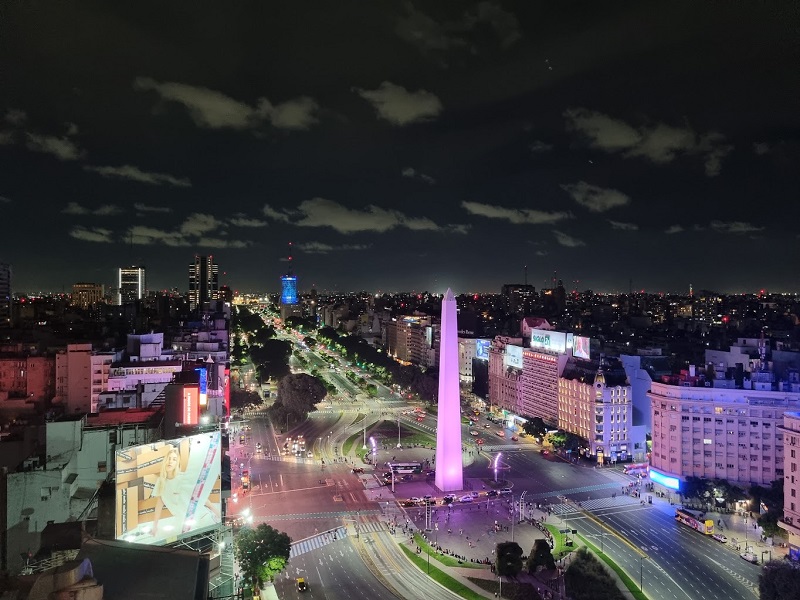Argentina is a great country to visit, but unfortunately they’ve been experiencing extortionate inflation over the last decade. Spending money there as a foreign tourist becomes unnecessarily complicated as a consequence, as there’s an official exchange rate that is almost irrelevant, and another “blue dollar rate” at which people actually exchange currencies.
Luckily the Argentinian government has finally decided to do something. They introduced a thing called Foreign Tourist Dollar this year, which allows credit cards issued in countries other than Argentina to trade at a preferential rate, which is great news!
[How it works]
Per the official announcement, only Visa and Mastercard are mentioned in the new deals. However from my personal experiments, as well as online reports, American Express works the same way too. I’m not sure how other credit cards such as Discover and Union Pay work, but I hope you have at least one of the three cards above.
They work slightly differently though:
- Visa transactions post at the preferential MEP rate immediately
- Mastercard / Amex transactions post at the official rate initially, and an adjusted refund posts a few days later (5-10 days)
I noticed transactions in Argentina took longer to process too. Under normal circumstances it’s about two days before a transaction becomes confirmed from pending for me, but in this case it’s about four days for the ones I made in Argentina.
Although there’s no fundamental difference between the three card issuers, some might prefer to use a Visa card as it tracks the correct amount sooner.
[What the rates are]
MEP rate is already reflected in Visa’s and Mastercard’s exchange rate calculator. I couldn’t find a calculator for Amex.
I made quite a few purchases with all three cards and got the same exchange rate: 1 USD = 366 ARS. All transactions were made on the same day (April 4th, 2023).
Meanwhile, Blue Dollar rate or the black market rate is 385, which is what you get for exchanging mint $50 / $100 bills at the local Cambios. Double check the rate they offer though, as one attempted to fool me with a very poor 300 quoting the festive period (Easter holiday).
So the MEP rate is still about 5% worse than the Blue Dollar rate.
- Exchanging cash is still the cheapest deal, but you’ll have to carry bricks of money around in your bag! That said, personally I found Buenos Aires to be rather safe.
- Swiping the plastics on the other hand is much more convenient and safer, and if you have a rewards credit card it may partially or even fully offset the 5% loss
I used credit cards as much as I could but also had some cash with me just in case. Credit cards are welcome at most tourist attractions and restaurants. Remember that it’s a very cheap country (a very good meal costs $15~$20 per head), so don’t over exchange at the beginning.
I paid everything with my US-issued credit cards, but I assume cards from other countries work in a similar way.
[Hotels]
On the other hand, it is very important to understand that you should never pay cash at a hotel! Like many other South American countries, foreign tourists are exempt of a tax that would otherwise be payable by local residents. In Argentina the tax rate is as much as 21%!
In addition to being a non-resident, you have to settle your accommodation bill with a foreign credit card, i.e. you mustn’t pay cash. You can either pay cash for that 5% exchange rate advantage, or pay by card to save the 21% VAT – we are not looking at advanced mathematics here…
Check your final bill before you pay, as not all hotels waive the tax automatically. I stayed at two hotels – one was very chill about it, whereas the other one asked me to fill out a form, carried out some identity checks before they removed the charge from my invoice.
And it brings another interesting topic. Hotels in Argentina, at least the better ones, tend to be priced at USD. However, you will be billed in local currency exchanged at the official rate.
That means in fact you pay much less than what the price tag suggests. For example, if a hotel is priced at $100, you will pay 100 * 215 (official FX) = 21500 ARS at checkout. But if you use a foreign card that would actually convert to 21500 / 366 (MEP) = $58.7 only.
In short, you only pay around 59% of what the hotel asks, so Argentina turns out to be even cheaper than what we had thought 🙂
Final tip: use Uber or Cabify in Buenos Aires, as I tried the local taxi once and the meter was twice as expensive! Despite all this money chaos, Buenos Aires is an amazing city and I definitely recommend you visiting.












Could the hotel trick be used to buy flights on Argentine websites, for example, paying with a foreign visa? Perhaps using vpn
I don’t think so as the ARS prices won’t be cheaper